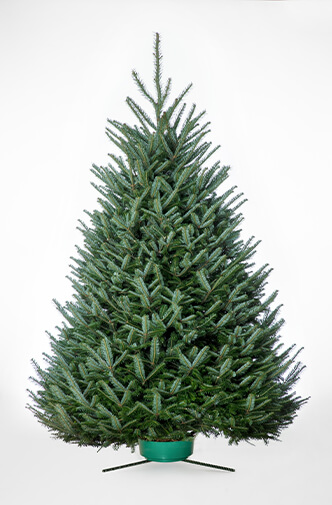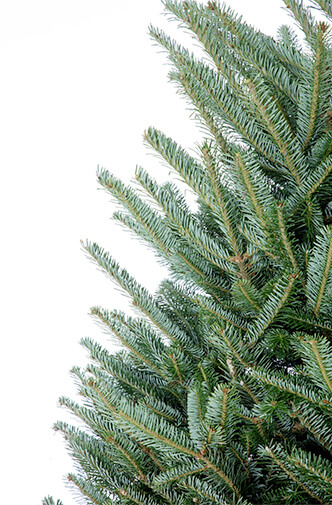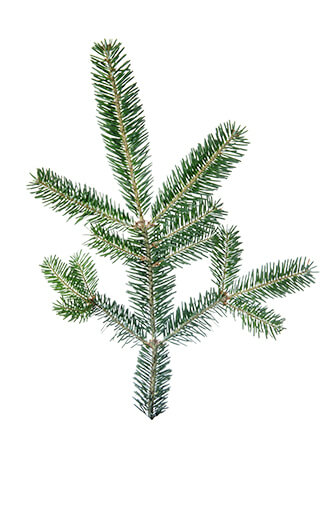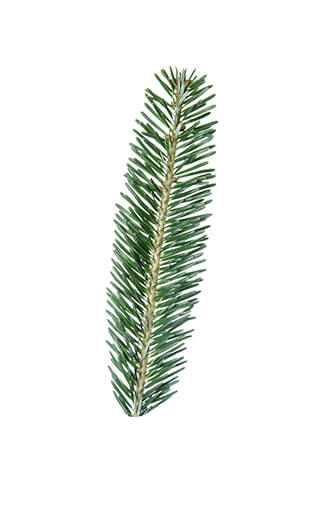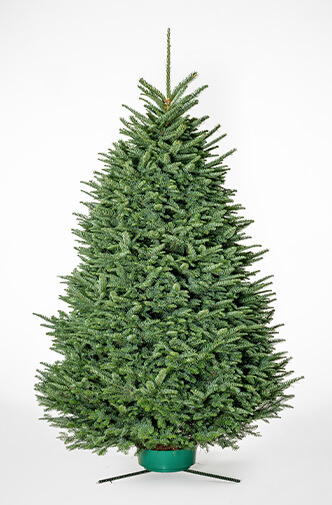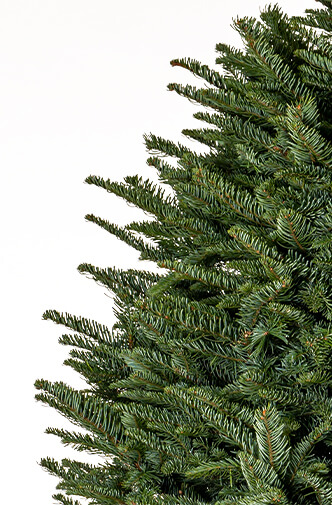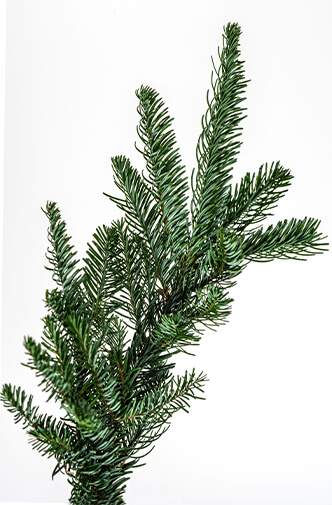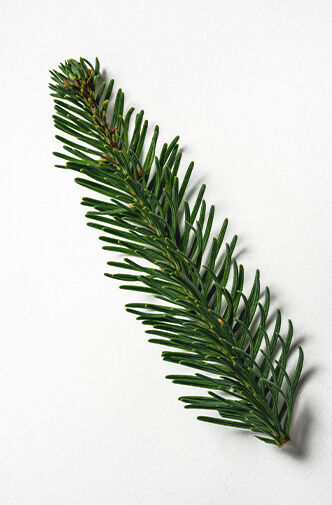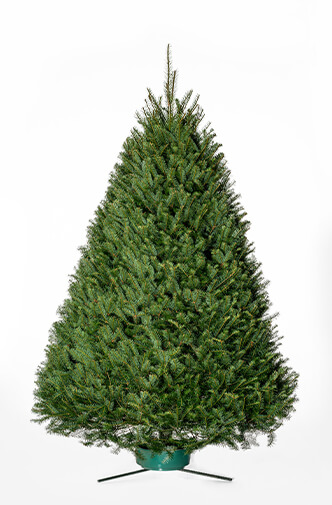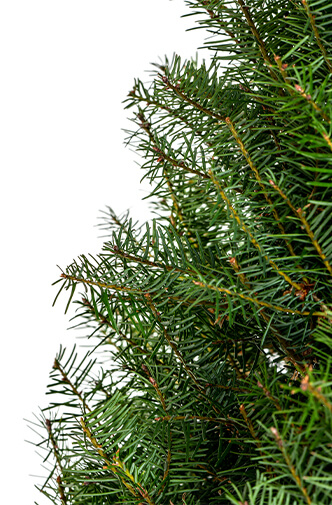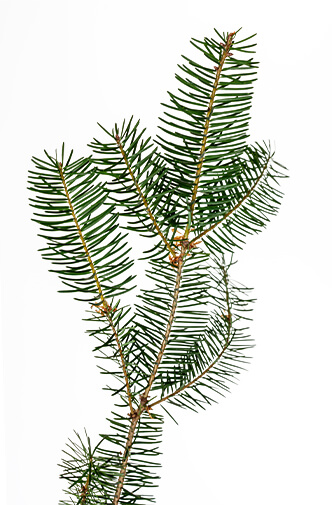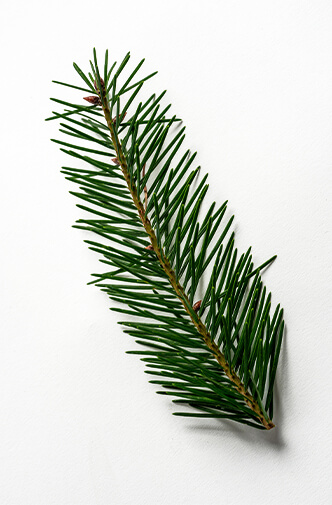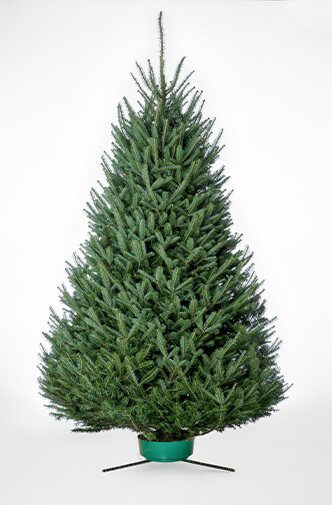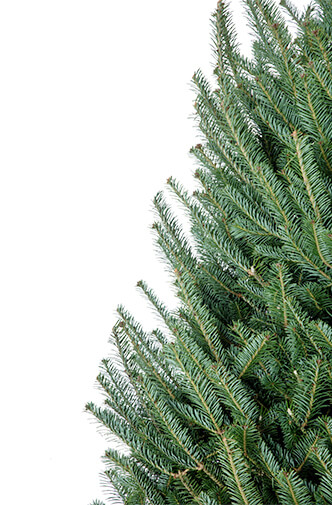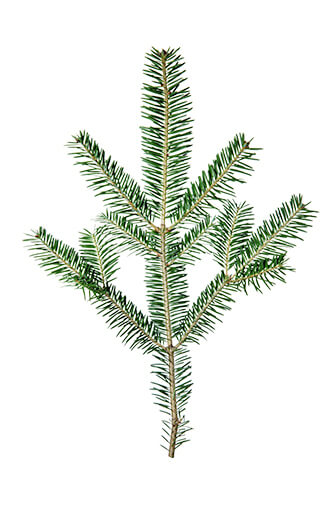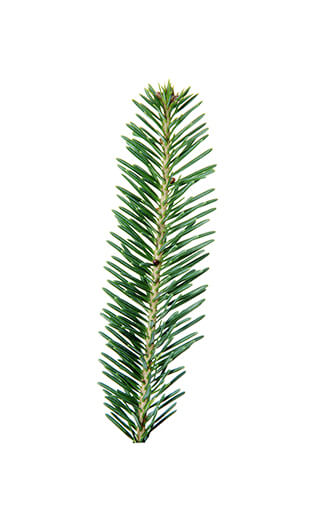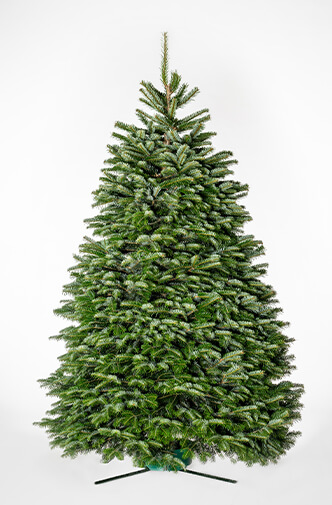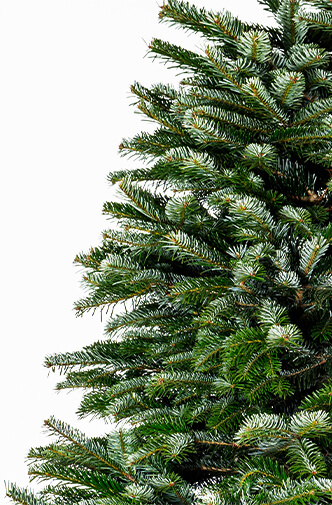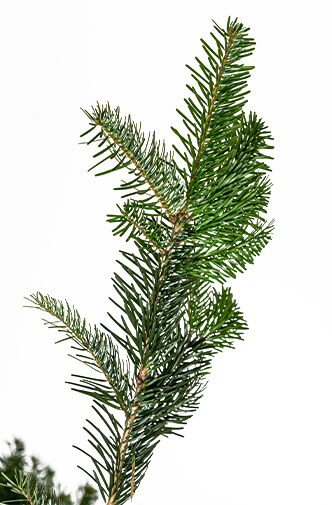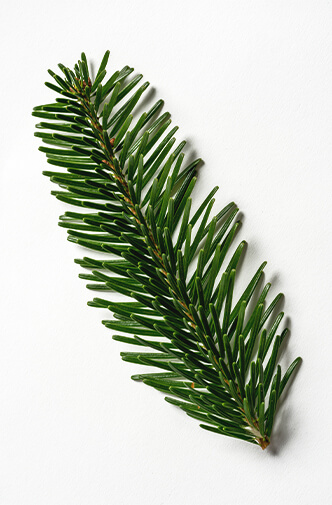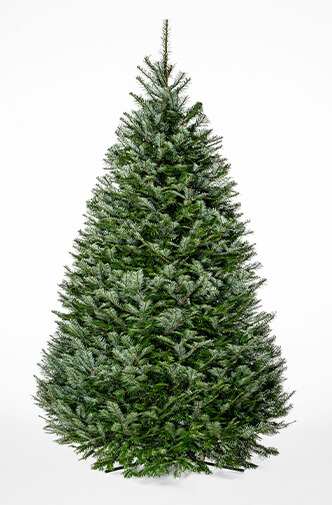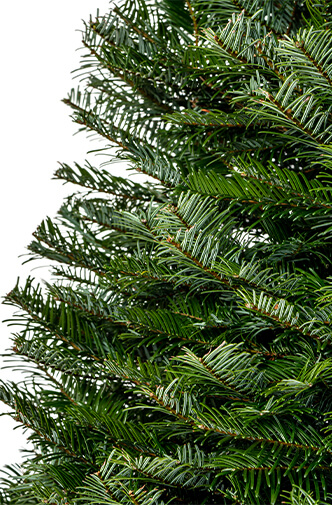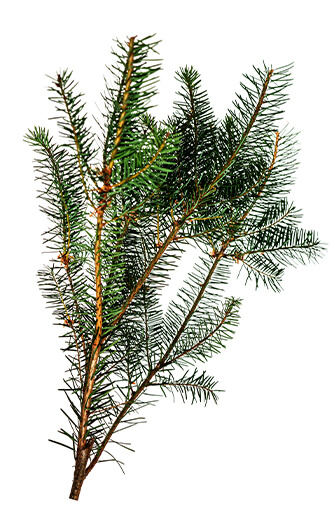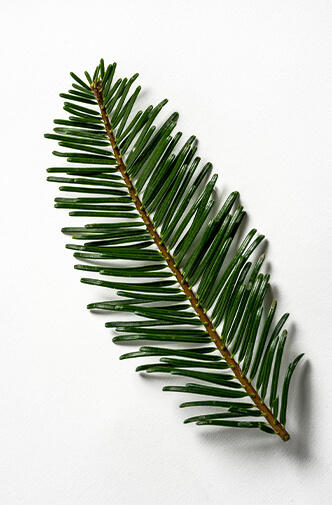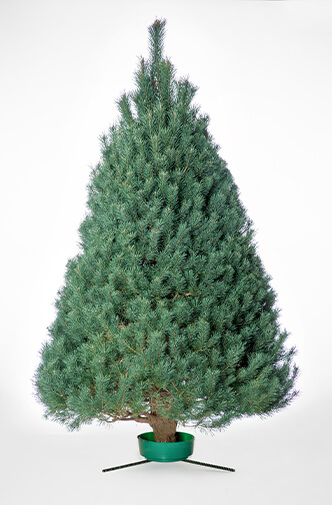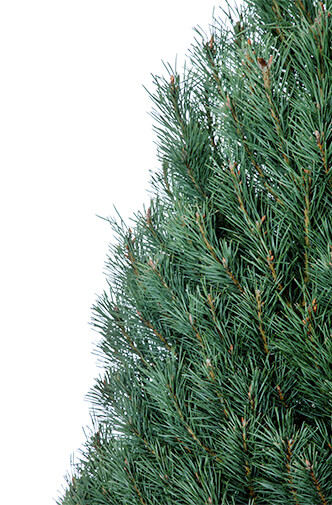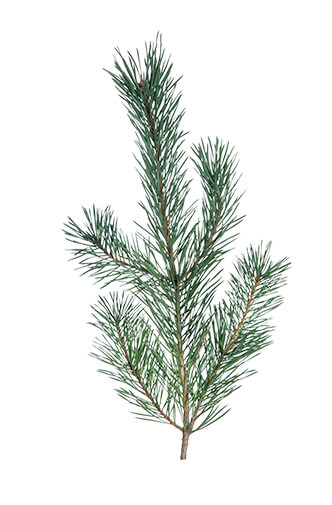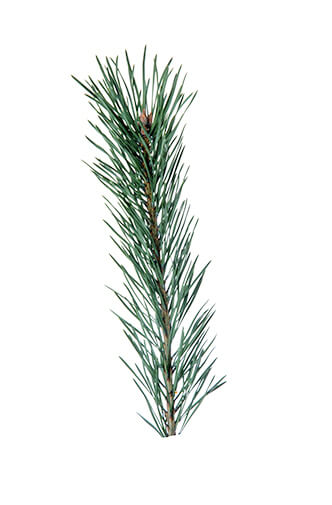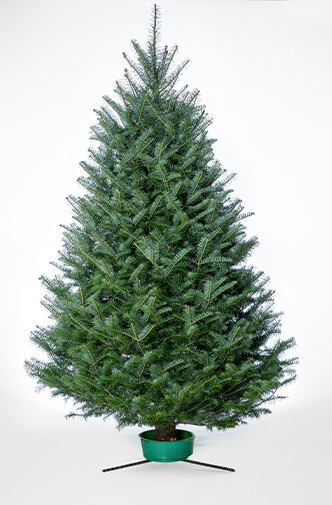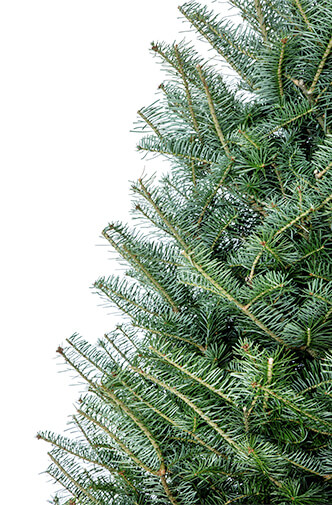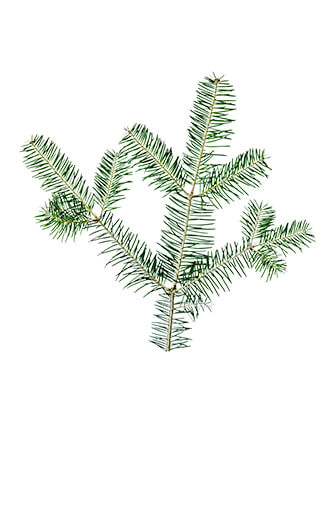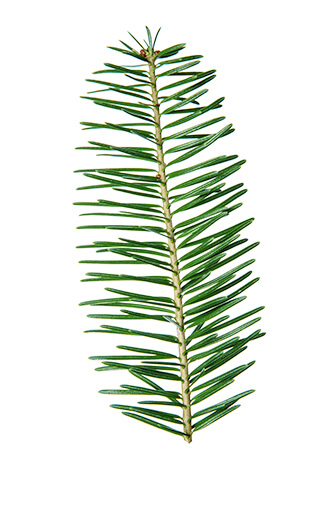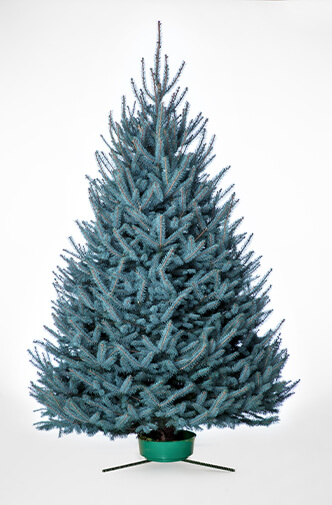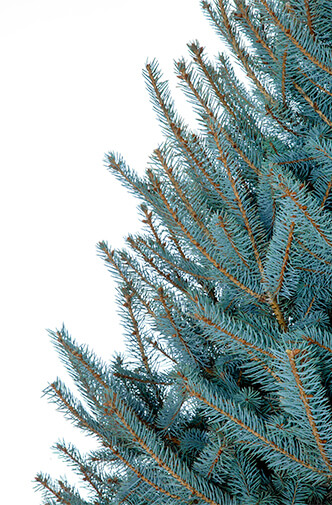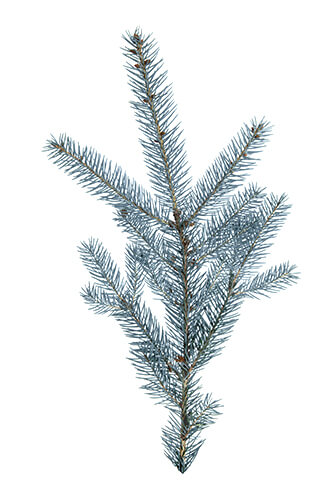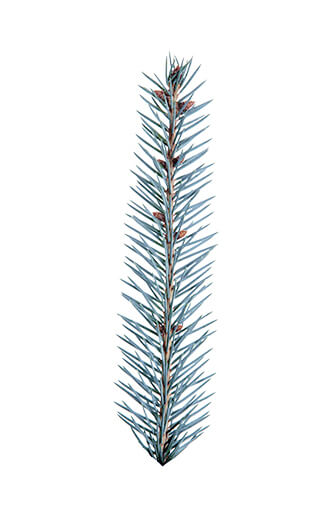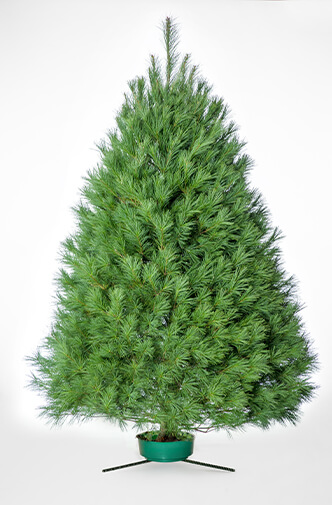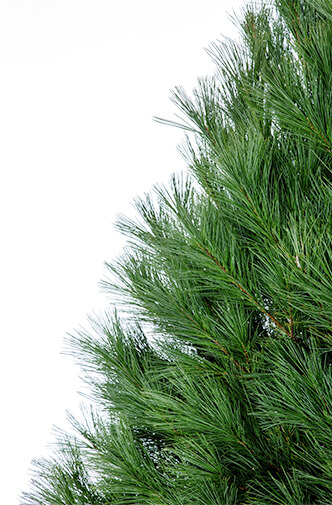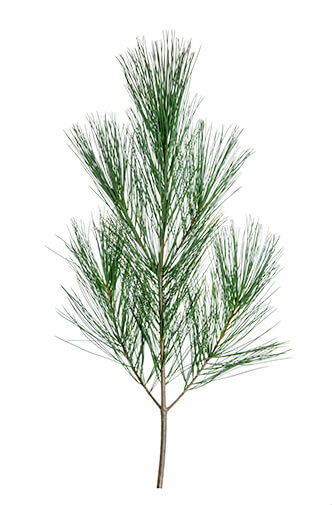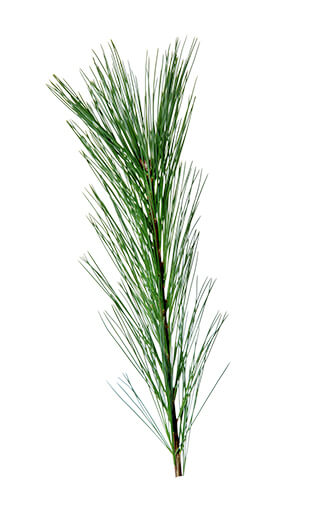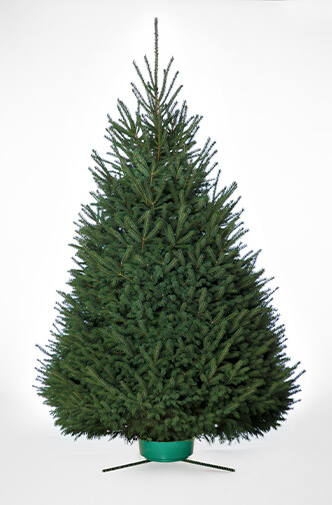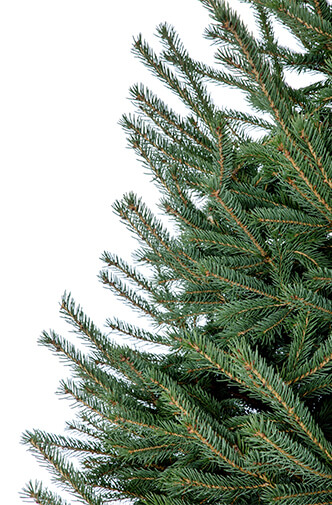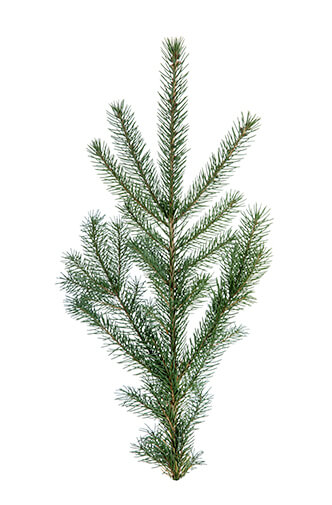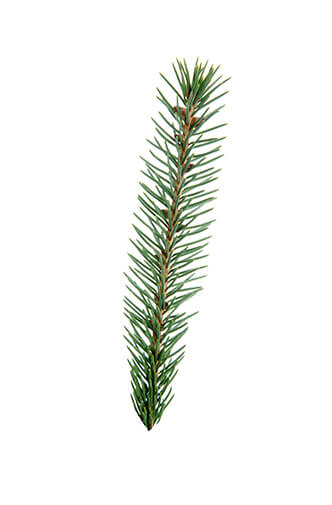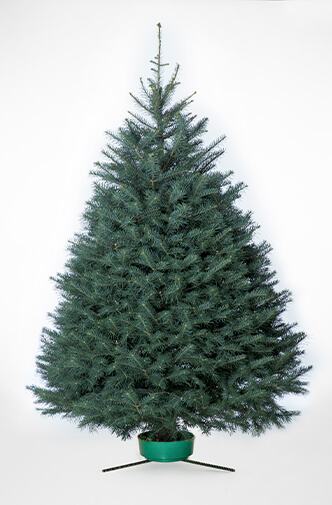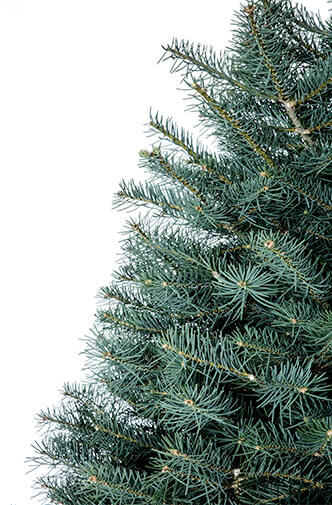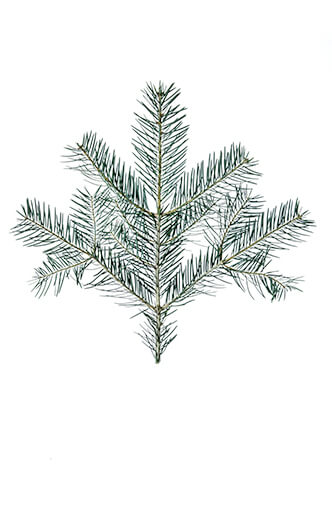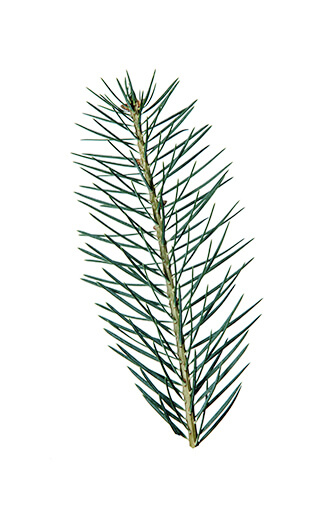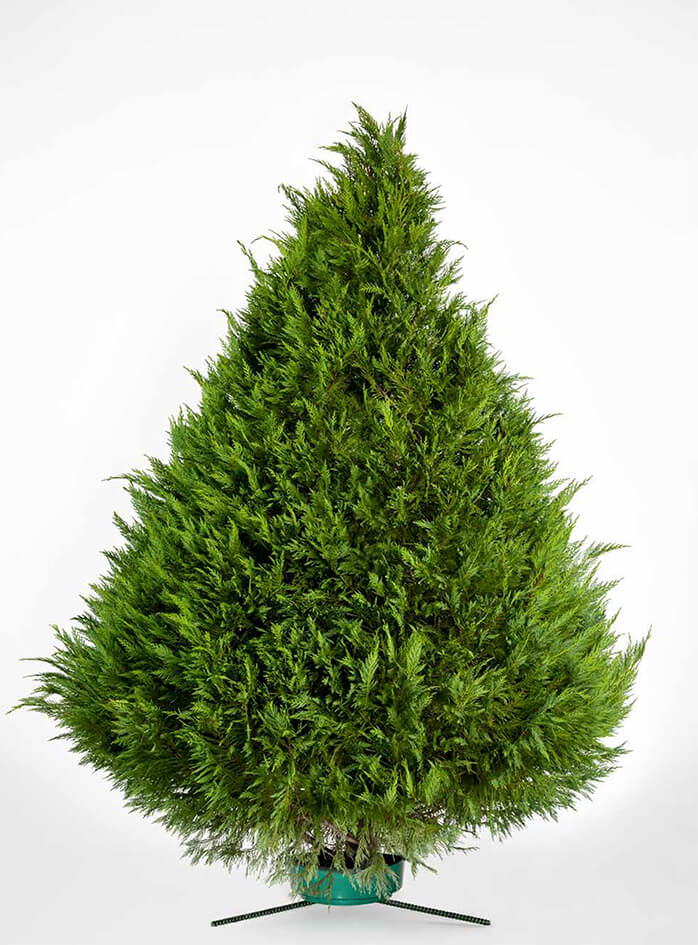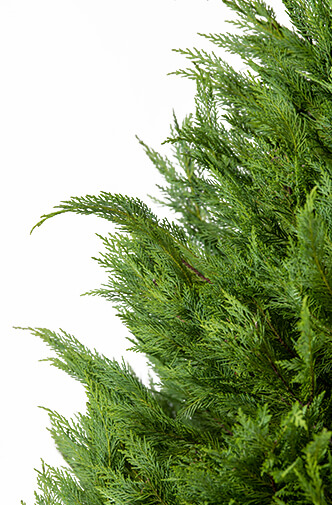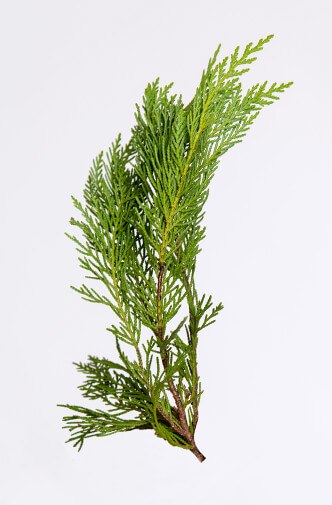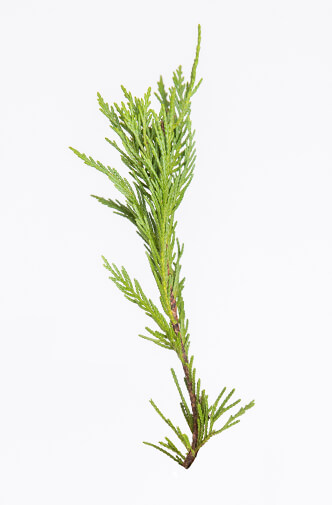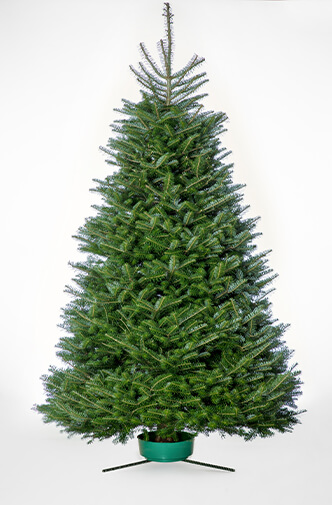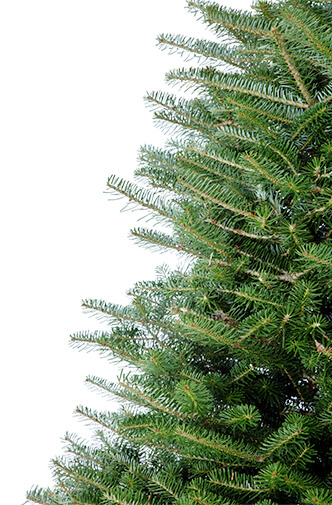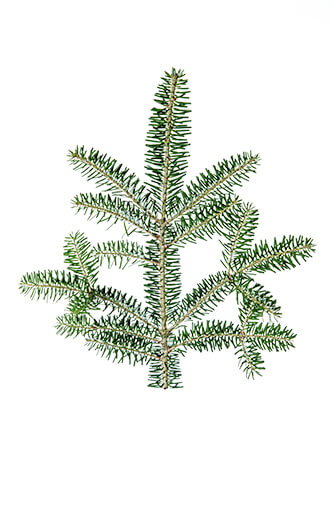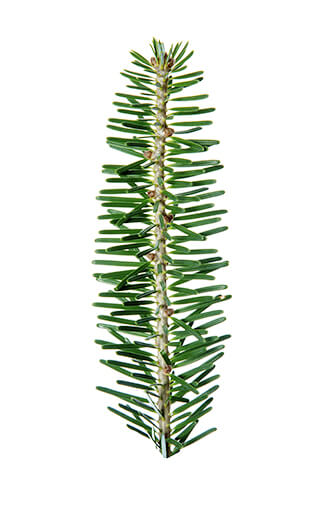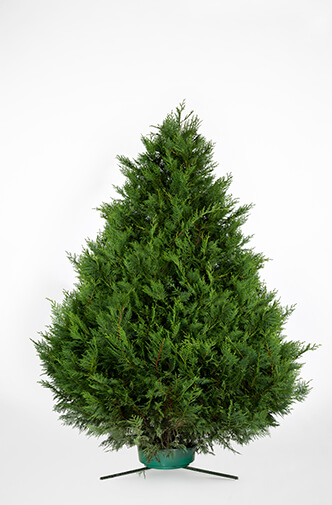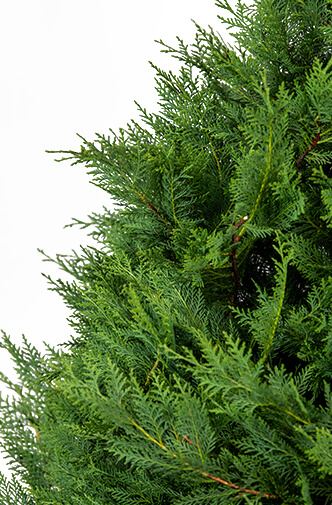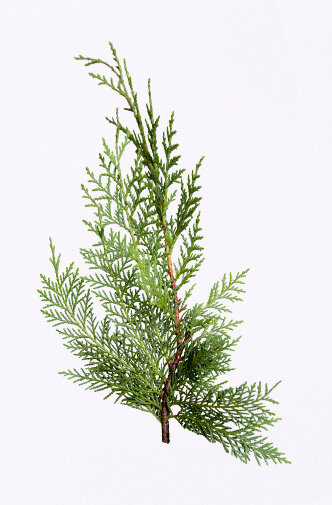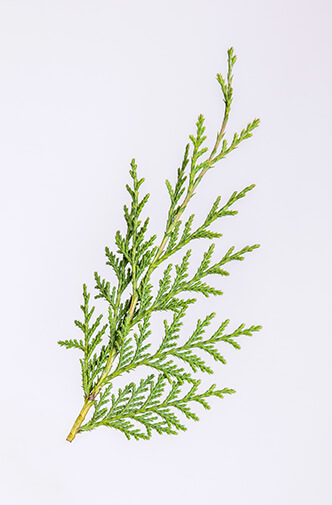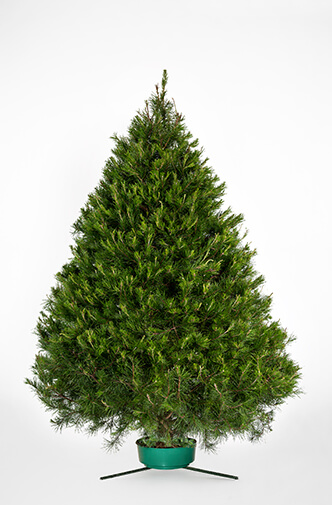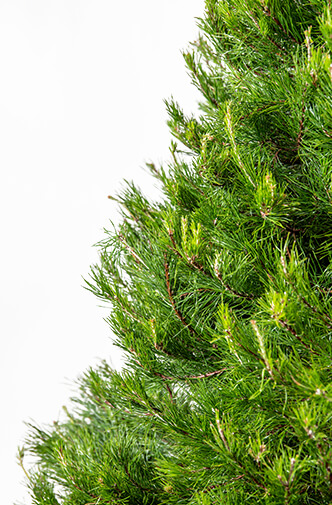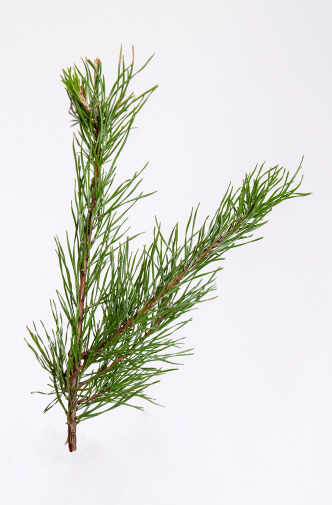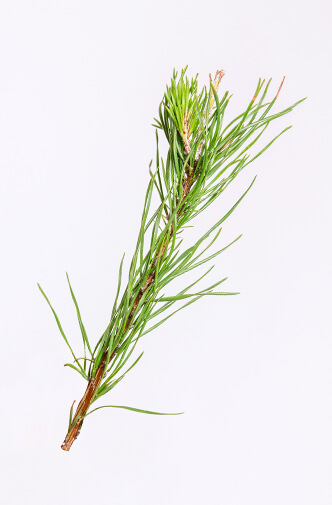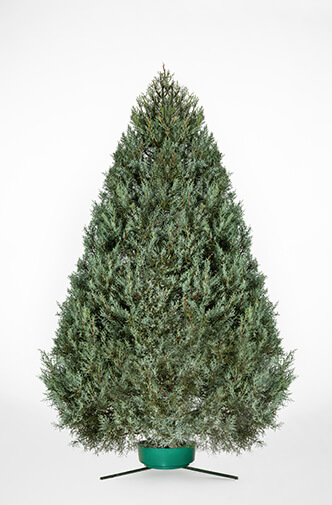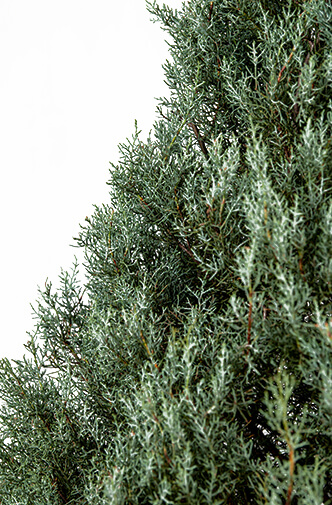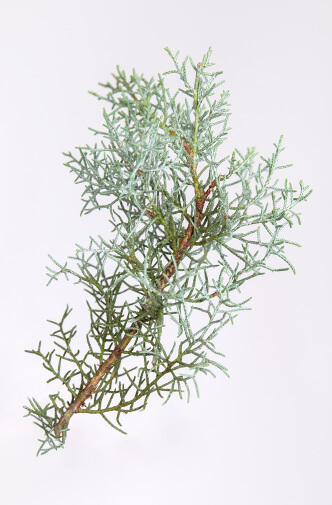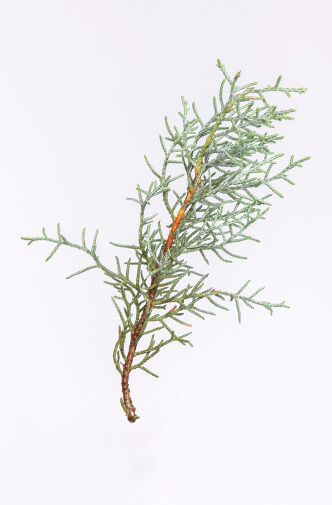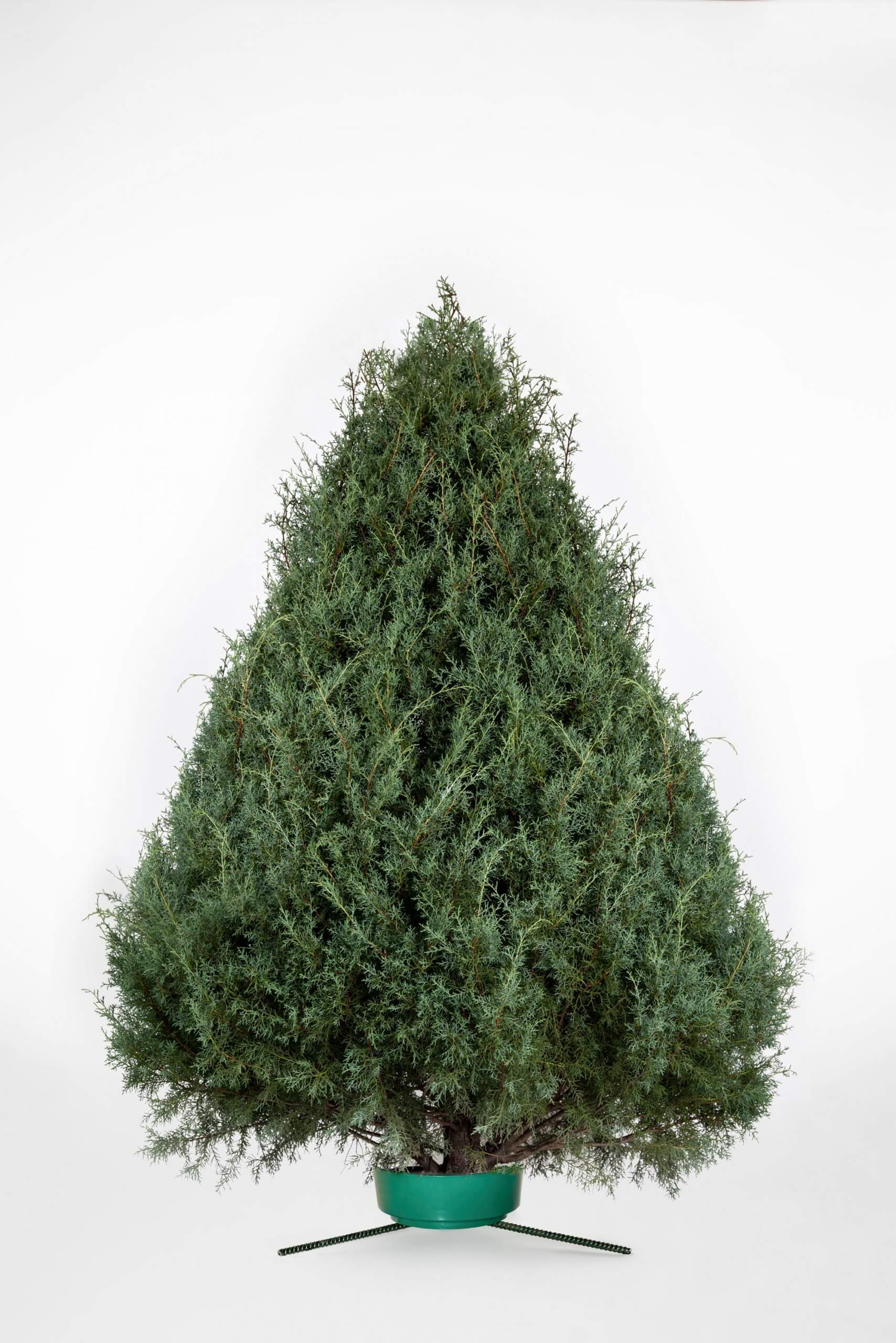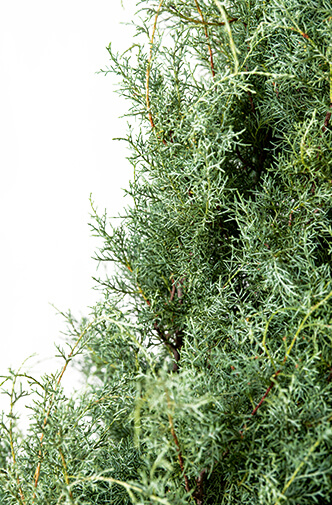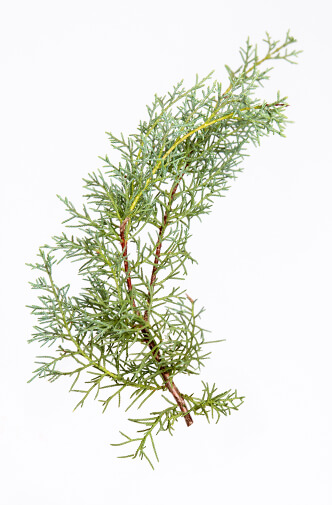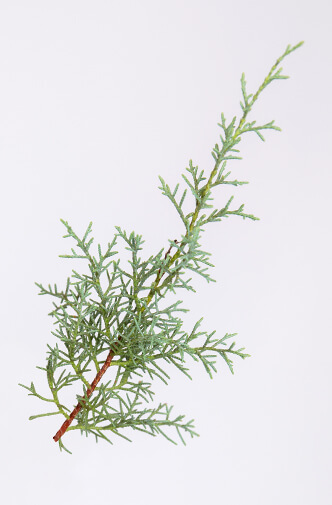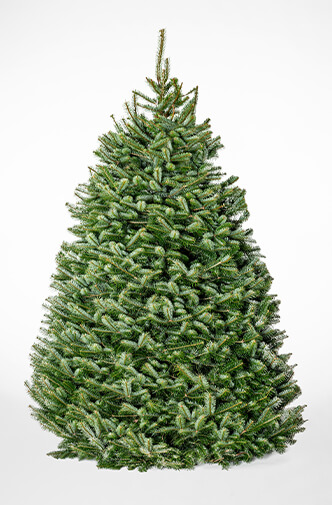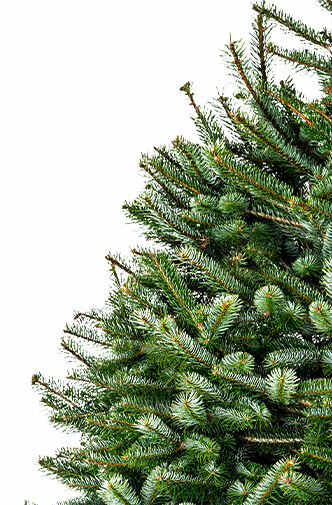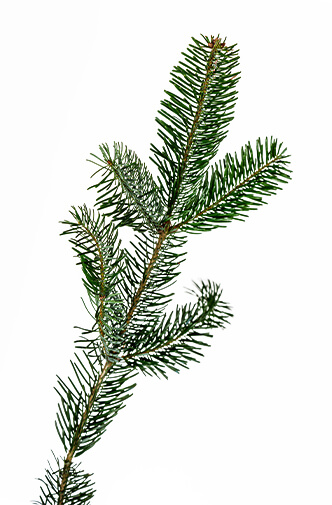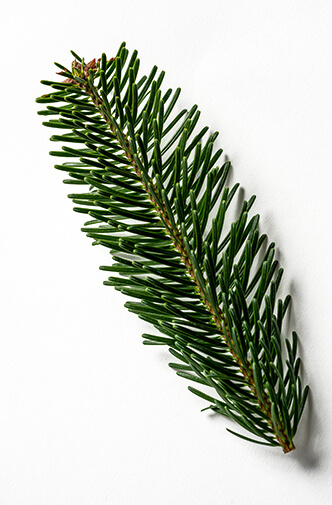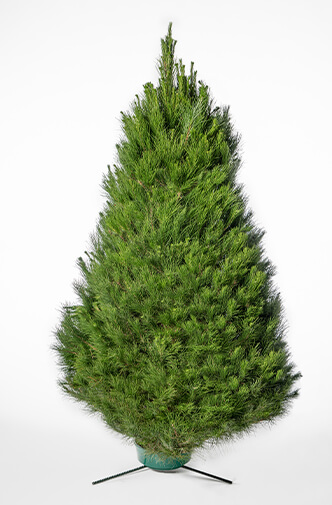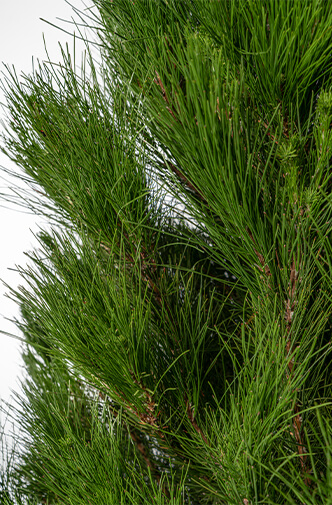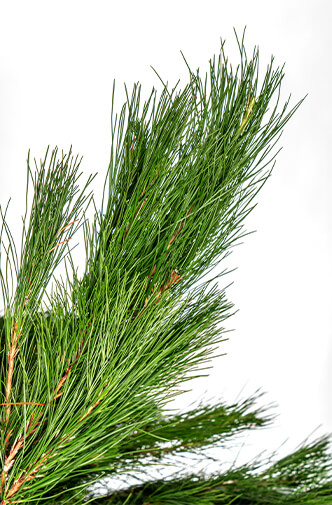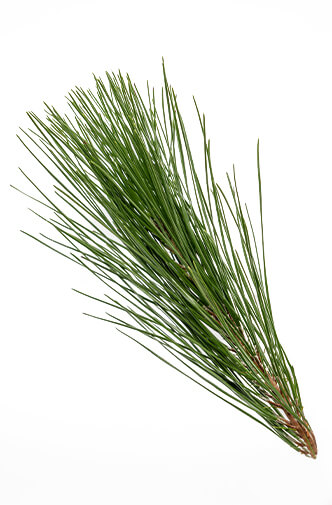Tree Guide
Explore 20 species of real Christmas trees and what makes them special. Use our filters to narrow your search and find where to shop your tree, from the farm to a local retail lot. Along the way discover more about real Christmas trees and what makes each one unique. And check out our Tree Locator to find a real Christmas tree near you.
-
Fraser Fir
Fraser Fir
One of America’s most popular Christmas trees — and for good reason — the Fraser fir touts blue-green needles with silvery undersides. With excellent needle retention and stiff branches, it holds up well to ornaments. Of course, the pleasant scent is a major perk, too.
-
Where it’s grown:The Appalachian Mountains of North Carolina, Virginia and Tennessee, upper Great Lakes and northeastern states
-
Where to buy:East of the Rocky Mountains; many retail locations nationwide
-
-
Noble Fir
Noble Fir
Noble in name and stature, this stately tree features short, blue-green needles. The Noble fir has some of the best needle retention among Christmas tree species, with stiff branches and an attractive form to handle heavy ornaments. You’ll also find it used as greenery for wreaths and garland.
-
Where it’s grown:The Pacific Northwest
-
Where to buy:West of the Rocky Mountains; many retail locations nationwide
-
-
Douglas Fir
Douglas Fir
A classic choice! Dense with soft, light green needles and a pleasant scent, the Douglas fir is one of the most popular Christmas tree species. Because the branches are not as stiff as some other species, the Douglas fir is best decorated with light-weight ornaments. This tree is also a good choice for budget-conscious consumers.
-
Where it’s grown:All major Christmas tree producing states
-
Where to buy:Widely available nationwide
-
-
Balsam Fir
Balsam Fir
If you can’t get enough of that real Christmas tree scent, you’re in luck! The Balsam fir is among the most fragrant of all species. The Balsam fir has relatively short, dark green needles and excellent form, making it a good choice for displaying ornaments.
-
Where it’s grown:Canada, northeastern states, the upper Great Lakes and Pennsylvania
-
Where to buy:Choose & cut farms in Canada, New England, the upper Great Lakes and Pennsylvania; most types of retail locations east of the Rockies
-
-
Nordmann Fir
Nordmann Fir
Darker than almost any other fir, the Nordmann fir features glossy, dark green needles and excellent needle retention. The structure presents in a layered or tiered fashion, with sturdy branches for displaying ornaments. This tree has very little or almost no fragrance, making it a great option for those who may be sensitive to scent.
-
Where it’s grown:The Pacific Northwest
-
Where to buy:Most types of retail locations west of the Rockies; in limited numbers in some northern states in the eastern US
-
-
Grand Fir
Grand Fir
The Grand fir is an elegant tree with dense, glossy foliage. Its needles are very distinctive — long, dark green and occurring in a flattened arrangement in two well-defined rows, they create an almost feather-like appearance. The Grand fir also maintains a fresh-cut scent. Due to its needle retention, it’s best displayed within two weeks of Christmas.
-
Where it’s grown:The Pacific Northwest
-
Where to buy:Retail locations west of the Rockies; in limited numbers in the Great Lakes region
-
-
Scotch Pine
Scotch Pine
The Scotch pine (or Scots pine) is among the first trees grown specifically for the Christmas tree market in the Midwest and is still a favorite amongst traditionalists. Dense with dark-green needles and excellent needle retention, its stiff branches hold up well to ornaments. This tree is also a good choice for budget-conscious consumers.
-
Where it’s grown:The Great Lakes and Midwest
-
Where to buy:Widely available throughout the Midwest and east of the Rockies
-
-
Canaan Fir
Canaan Fir
The Canaan fir shares many of the characteristics of the Balsam fir and Fraser fir with its rich color, pleasant fragrance and an attractive layered structure that is ideal for displaying ornaments. Like the Fraser fir, the needles of the Canaan fir are relatively short and soft.
-
Where it’s grown:West Virginia, Ohio, Pennsylvania and many Great Lakes states.
-
Where to buy:Some retail locations east of the Rockies; choose & cut farms in West Virginia, Ohio, Pennsylvania and many Great Lakes states.
-
-
Colorado Blue Spruce
Colorado Blue Spruce
The Colorado blue spruce is a popular choice due to its lovely silver-blue color. Its branches are stiff and hold heavy ornaments well, but take care — blue spruce needles are quite sharp! Wear gloves and long sleeves when handling. However, its needles can help keep pets away from the tree. This tree is best displayed for 2-3 weeks before needle retention is compromised.
-
Where it’s grown:Upper Great Lakes, the Midwest and in the northeast.
-
Where to buy:East of the Rockies; most frequently at retail locations in northern states
-
-
White Pine
White Pine
A dense tree with long, soft, green needles, the White pine does best with lightweight ornaments. Simple white lights show off the White Pine’s natural beauty. Its excellent needle retention makes it perfect for wreaths, roping or other greenery.
-
Where it’s grown:The Midwest, Great Lakes, the Northeast and the Appalachians
-
Where to buy:Many retail locations east of the Rockies
-
-
Black Hills Spruce
Black Hills Spruce
With grey-green needles, the Black Hills spruce has excellent color and presents a traditional Christmas tree appearance. Its branches are stiff and hold up well to ornaments and is a great tree for 2-3 weeks of display before needle retention is compromised.
-
Where it’s grown:Upper Great Lakes
-
Where to buy:East of the Rockies; most frequently at retail locations in northern states
-
-
Concolor Fir
Concolor Fir
The Concolor fir (sometimes known as the White fir) has a stately and symmetrical form and holds ornaments well. Its needles are typically blue-green and, in some cases, can be a dramatic powder blue. The needles of the Concolor fir are longer than most other firs commonly grown for Christmas trees, giving it a coarser appearance. Concolor needles have a unique and pleasant scent that is usually described as “citrusy” or “orange-like.”
-
Where it’s grown:Great Lakes, Midwest and northeastern states
-
Where to buy:Most types of retail locations east of the Rockies
-
-
Leyland Cypress
Leyland Cypress
Among the most popular Christmas trees in the south, the Leyland cypress features dark, green-gray foliage with very little aroma. The Leyland cypress has a very attractive shape and full branching overall. Its upright branches have a feathery appearance, which call for lightweight ornaments. Tree care is important, as the Leyland cypress requires frequent watering when brought into a warm home.
-
Where it’s grown:The South
-
Where to buy:Found almost exclusively in southern states
-
-
Korean Fir
Korean Fir
With a form similar to the Fraser fir, the Korean fir is easily identified by its dark green needles with striking silvery undersides. Strong branching and short, relatively soft needles are characteristic of the Korean fir. Note: The fragrance of the Korean fir is a bit different than more traditional species.
-
Where it’s grown:Great Lakes and northeastern states
-
Where to buy:Choose & cut farms in the Great Lakes, Pennsylvania and surrounding areas; in a limited number of other retail locations
-
-
Murray Cypress
Murray Cypress
The Murray cypress is much like the Leyland cypress in appearance. However, the Murray cypress features foliage that is slightly darker green and has somewhat stronger branches, touting an attractive shape and full branching overall. This species has very little aroma. Tree care is important, and the Murray cypress requires frequent watering when brought into a warm home.
-
Where it’s grown:The South
-
Where to buy:Choose & cut farms in southern states
-
-
Virginia Pine
Virginia Pine
A popular choice in the south, the Virginia pine has branches that are stout and woody to support heavier ornaments. You’ll enjoy its rich, piney fragrance and good needle retention when watered regularly. The tree is small to medium in size, and its foliage becomes extremely dense.
-
Where it’s grown:The South
-
Where to buy:Primarily in Southern states
-
-
Arizona Cypress – Blue Ice
Arizona Cypress – Blue Ice
Blue Ice is a cultivar of the Arizona cypress and has attractive blue-gray foliage and upright branches. Its foliage it not “needle-like” but, instead, is flat and lacey, much like cedar. The Arizona cypress features a citrusy or minty fragrance. Typical of cypresses, Blue Ice is subject to rapid drying in a warm home and requires frequent watering.
-
Where it’s grown:The South
-
Where to buy:Almost exclusively in southern states at choose & cut farms
-
-
Arizona Cypress – Carolina Sapphire
Arizona Cypress – Carolina Sapphire
Carolina Sapphire is a cultivar of the Arizona cypress. A bit different from the Blue Ice cultivar, the Carolina Sapphire features blue to gray-blue foliage and upright branches. Its foliage it not “needle-like” but, instead, is flat and lacey, much like cedar. The Arizona cypress features a citrusy or minty fragrance. Typical of cypresses, Carolina Sapphire is subject to rapid drying in a warm home and requires frequent watering.
-
Where it’s grown:The South
-
Where to buy:Almost exclusively in southern states at choose & cut farms
-
-
Turkish Fir
Turkish Fir
A relative newcomer, the Turkish fir is a promising species for US Christmas tree producers. Closely related to the Nordmann fir, the Turkish fir features deep green needles, a layered appearance to its branches and excellent needle retention, making it a great choice for displaying ornaments. Because of its newness in the market, Turkish fir will most likely be found at choose & cut farms or garden centers and seasonal lots near the grower.
-
Where it’s grown:The Pacific Northwest, upper Great Lakes and Pennsylvania
-
Where to buy:Choose & cut farms, garden centers or seasonal lots near the Pacific Northwest, upper Great Lakes and Pennsylvania
-
-
Monterey Pine
Monterey Pine
Popular in the southwest, the Monterey pine is very fragrant and features strong branches for ornaments. It features medium green needles that are approximately 4 to 5 inches long.
-
Where it’s grown:The Southwest
-
Where to buy:Almost exclusively on choose & cut tree farms in the Southwest; typically not available at retail locations
-
